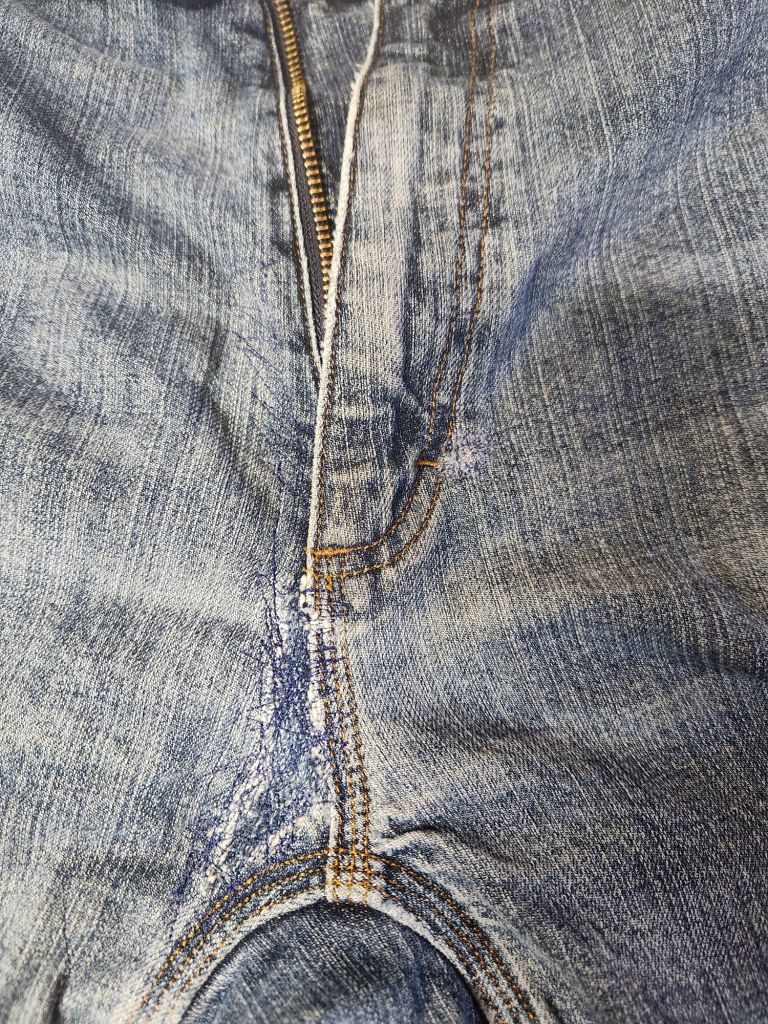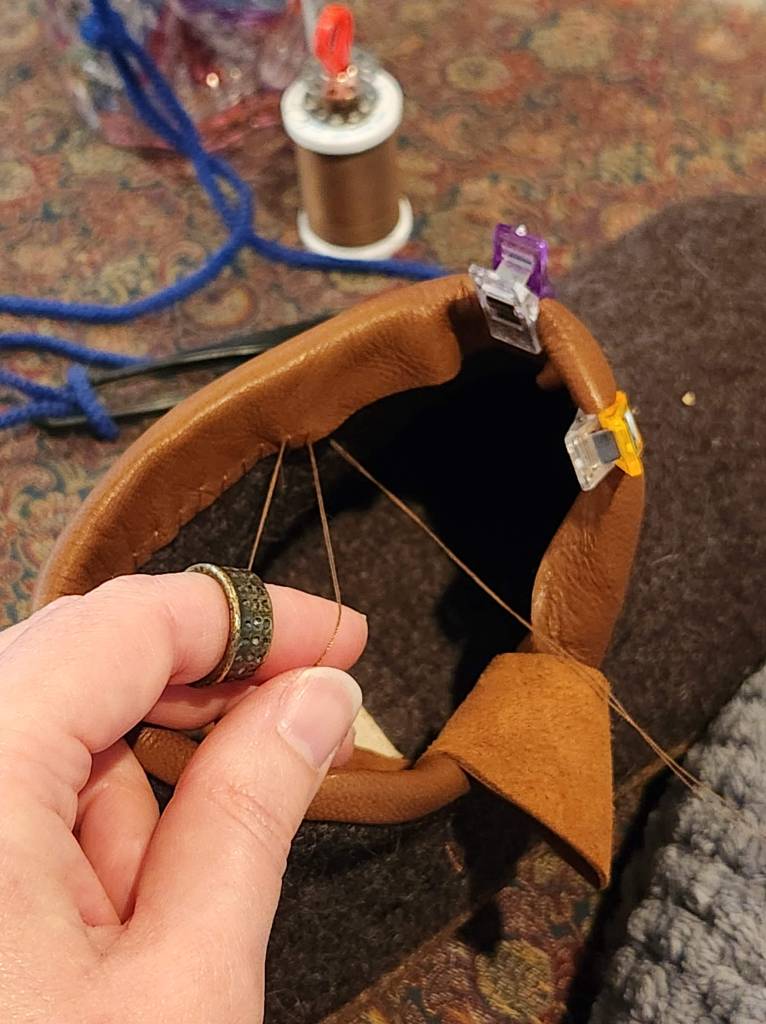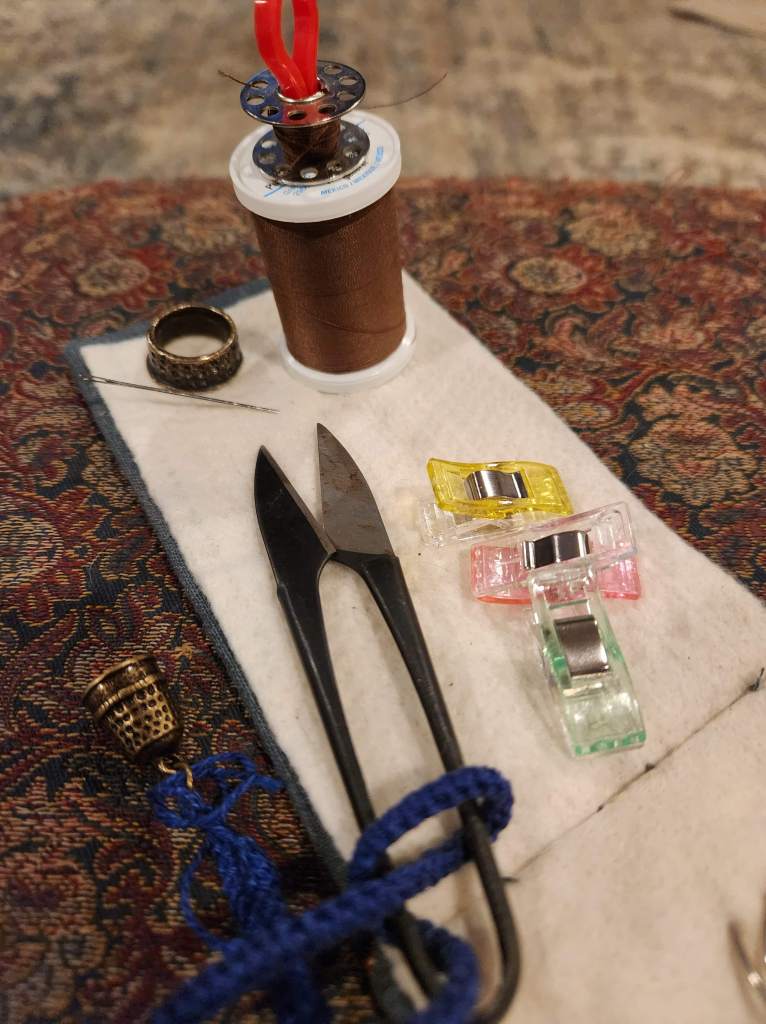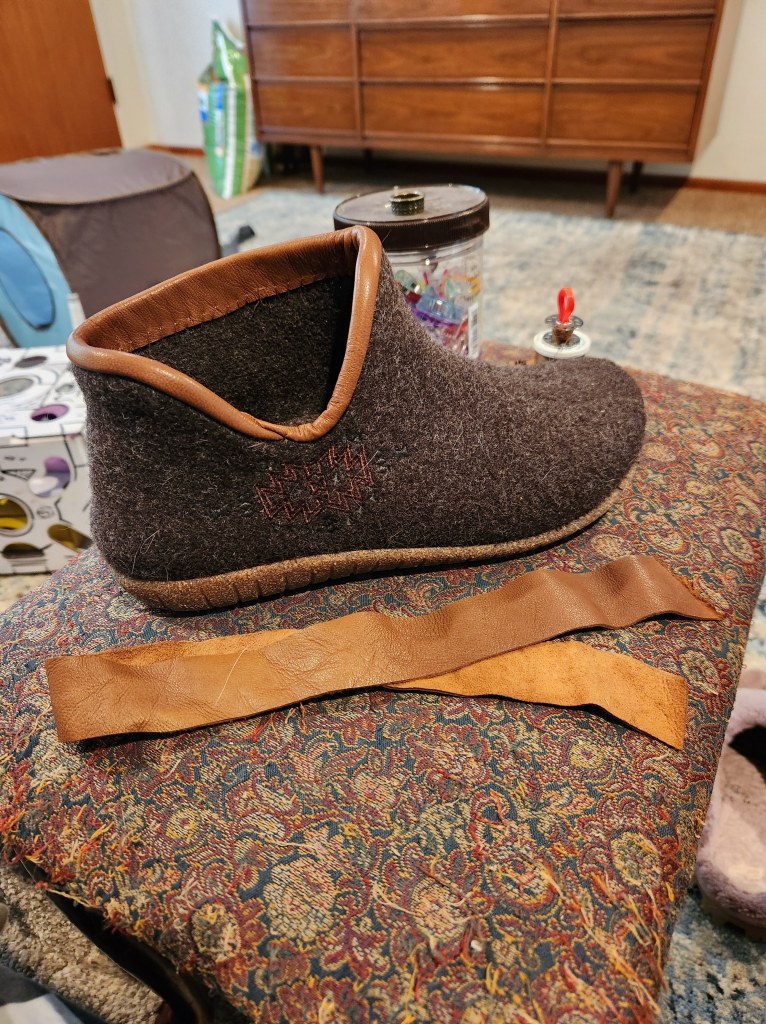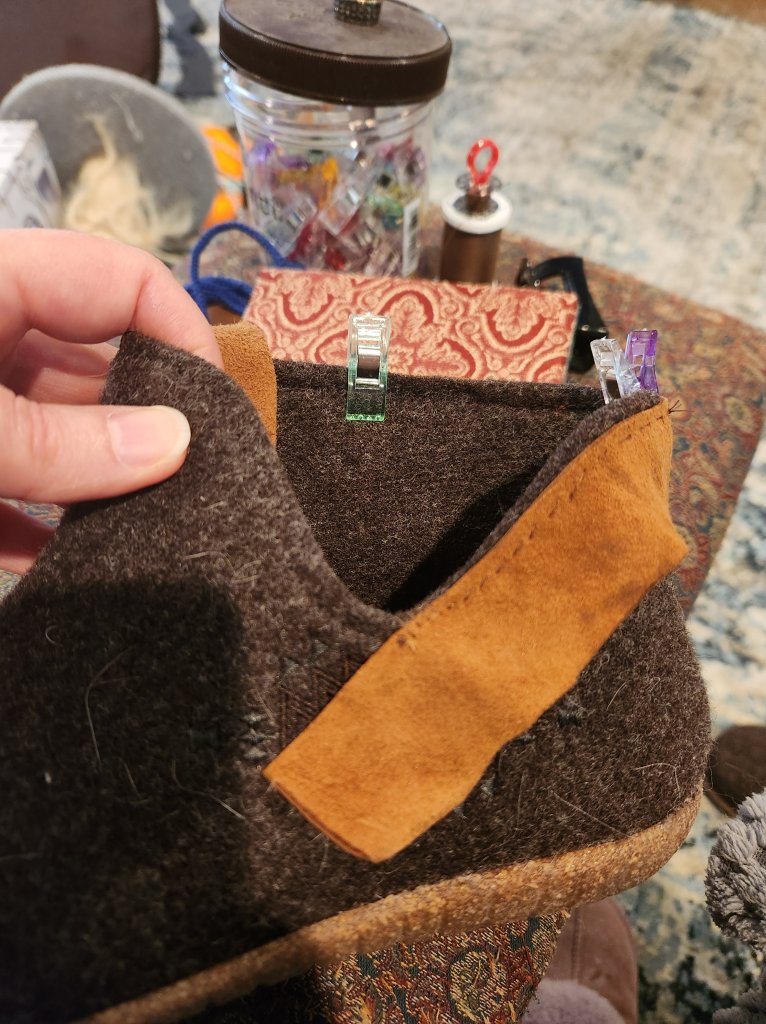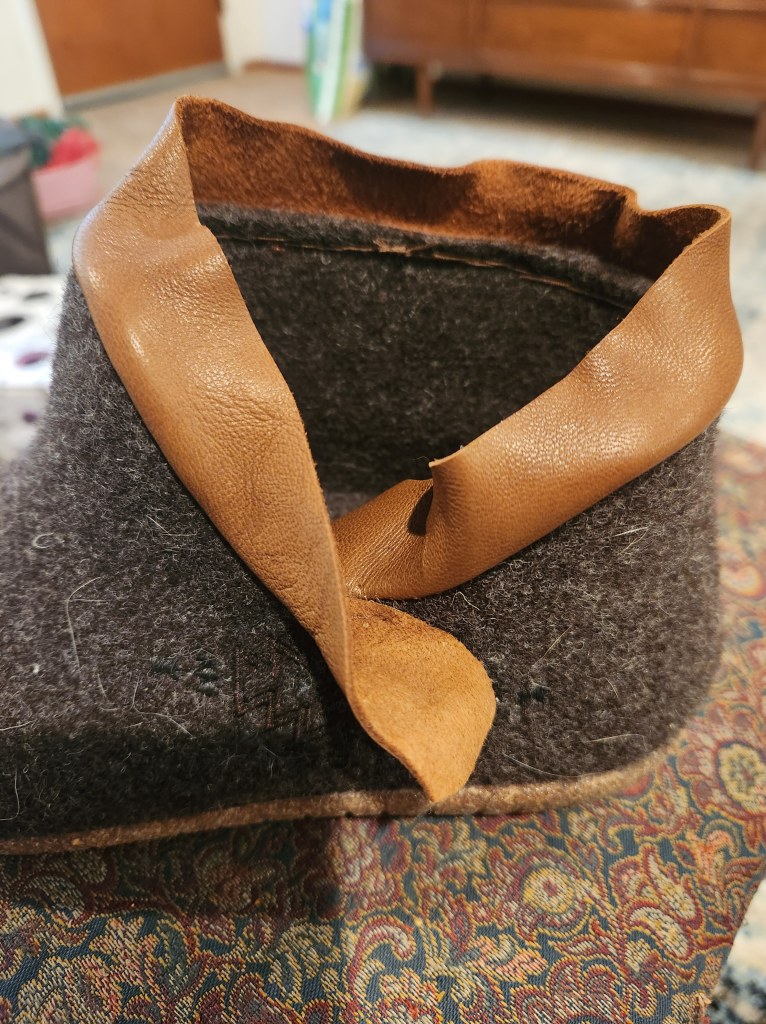A denim repair story.
My husband is tough on his clothes. I can’t explain; I don’t know what he does. OK, I do know – he gets snagged by nails in attics, gouges himself on sheet metal and spends a lot of time crouching down. Being an electrician is particularly hard on one’s pants. He’s ripped the crotch on more pants than I care to count. That’s when he’s not ripping off a pocket, shredding the knees and hems, or just wearing out the butt. (That one I can’t explain).
This particular pair of pants got a poke hole near the zip (#1, below, which is post repair), which I hand darned speedily and sloppily. It’s got a little piece of interfacing or some such behind it. The good news is it seems to have held up for another dozen washes so far.
And then he ripped the crotch on the other side, from the zip down, sort of shredding the fabric there (#2, below). I almost tossed the pants, but the fabric looked so good otherwise that I decided to patch the inside and darn over the whole thing on my machine. (Dreams of a professional darning machine; drools in sleep).
Materials used:
- ripped jeans
- old jeans to harvest some fabric
- various semi-matching threads – a dark and a medium blue, in this case (husband does not care what repairs look like)
- sewing machine with a narrow foot, so I could get as close to the fly as possible and a wider toe foot for zigzag / overcasting
Method:
- Cut the sacrificial denim big enough that it can be tacked on well over the damaged area. Don’t go too big. We don’t want to create too much bulk.
- Overcast the patch edges to prevent fraying.
- Prep the damaged pants. In this case, I decided not to trim any of the frayed area. The hole was about 1″ by 2 1/2″ and all the yarns one direction were in tact. If the hole had been worse, I might have cut out the damaged part.
- Pin patch in place from the outside.
- Usually I’ll zigzag the fabric on to avoid having a hard stitch line that can create weak spots in the future, but I was stitching over the bottom of the crotch seam edge, which is several thicknesses; I just straight stitched.
- Drop your feed dogs and either zigzag all over the frayed area, straying into the “healthy” fabric a bit, or do the same with straight stitch back and forth (and back and forth, and back and forth…). Essentially, you’re creating new fabric.
- I was a little afraid that the rip would travel up from it’s present location, all along the edge of the zip, so I stitched up there, about 2″ above the bottom curve of the fly, a fair amount.
The result is not beautiful or invisible, but also not terribly obvious. They’ve been worn and washed a couple times and are holding up so far. Actually, he didn’t notice which pair had the repair, so good job me.

